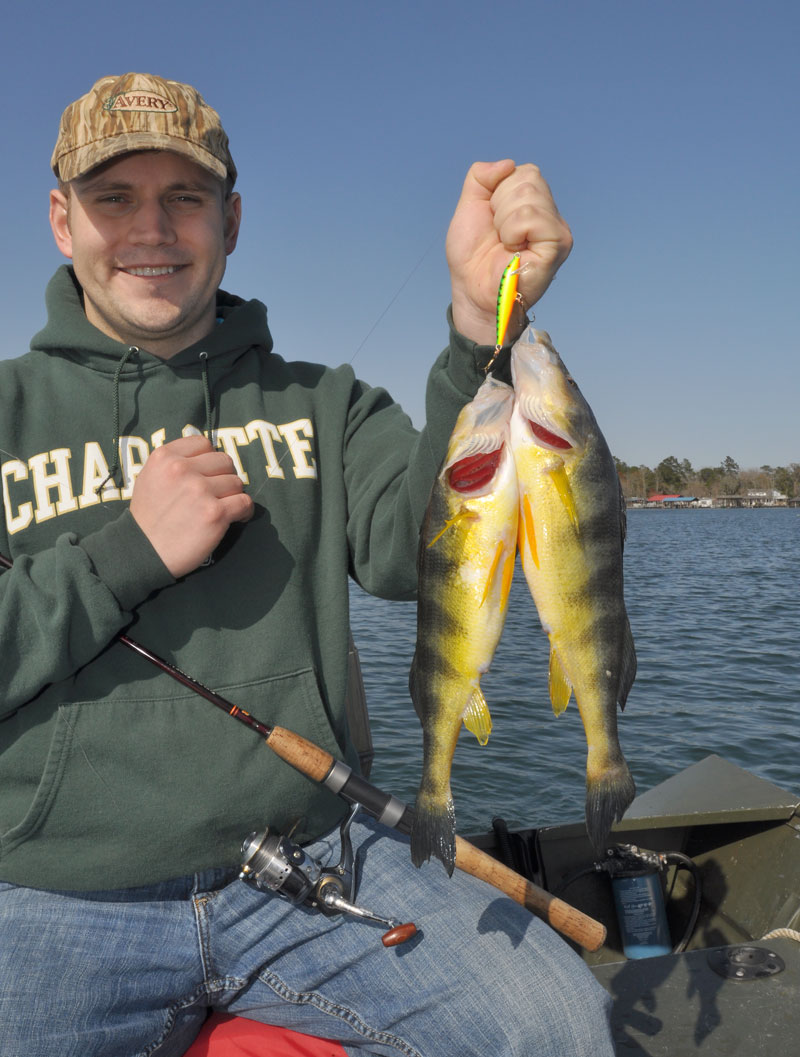
Winter is a great time to yank a peck of yellow perch
Most anglers catch yellow perch by happenstance, as targets of opportunity when they are fishing for other species. However, during the chilly days of late winter to early spring, yellow perch begin to spawn. Anglers who are fishing for crappie sometimes catch them because they eat the same small minnows, worms and crickets intended for crappie. They also attack crappie jigs and other small lures.
Like most anglers, fisheries biologists from the Carolinas do not finely focus their attention on yellow perch. Rather, they catch them during surveys of multiple species, usually during summer months. But for the dedicated perch-jerker, fisheries biologists in both states have turned up some consistencies that can help them target this tastiest-of-all panfish.
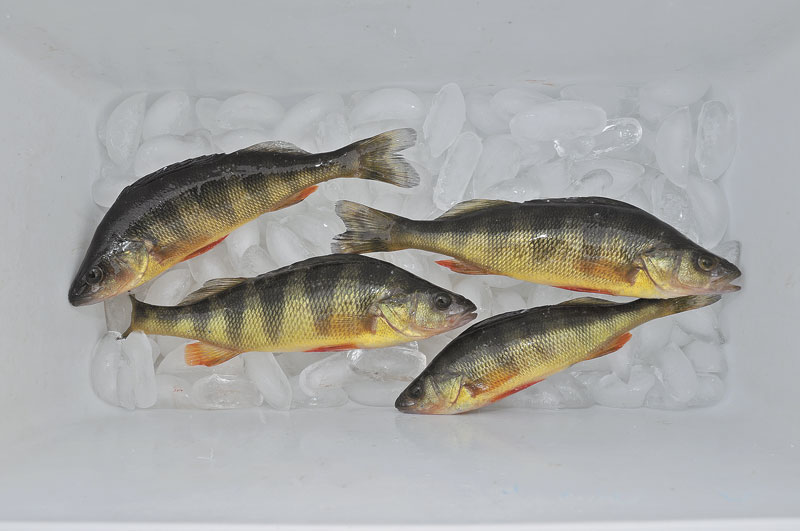
North Carolina
Singletary Lake
Singletary Lake, located near Elizabethtown, is a 572-acre Carolina Bay Lake. Like most bay lakes, it produces yellow perch. The low pH (high acidity) water of bay lakes results in lower abundance of other, more popular species including largemouth bass and crappie, said Singletary State Park Superintendent Lane Garner.
“The lake has yellow perch, chain pickerel, blue-spotted sunfish and bowfin, not species most anglers are interested in catching,” Garner said. “Our staff enjoy fishing and we catch yellow perch weighing up to a pound. But most are 5 to 8 inches. Red worms are the best bait. Anglers can fish anywhere there is a walking trail or from the pier.”
Fishing and boating were once limited to days when groups were not using the group camping facilities. However, 3 years ago, it opened to the public anytime during park hours. Anglers can launch small boats, kayaks and canoes at the spillway. But the park has no dedicated access.
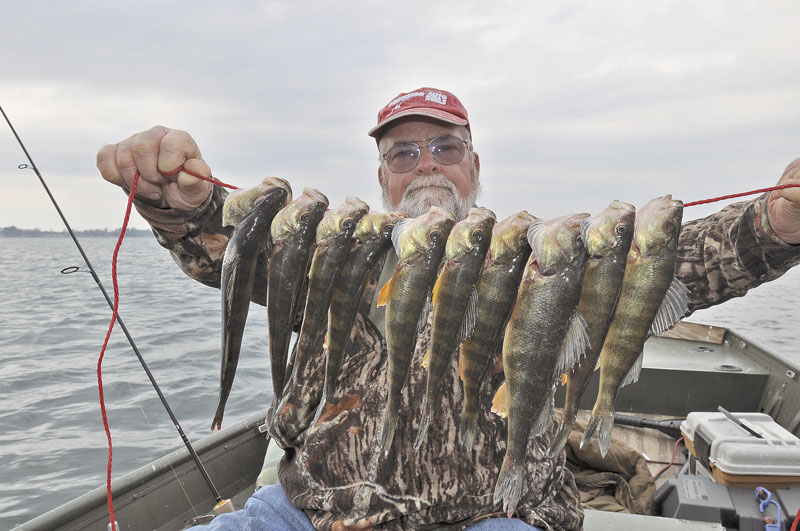
Bay Tree Lake
Garner said Baytree Lake access is more difficult. The access road to the 609-acre lake is gated. A four-wheel drive vehicle is needed to access the trail from N.C. 53. The lock combination is changed monthly. Anglers must request the combination from the park office and inform them anytime they enter the area. Trailering a boat is difficult, so anglers use paddle craft.
Yellow perch are abundant along the edges, along with largemouth bass and bluegills. Small lures cast along the bank and to cypress trees will light up yellow perch.
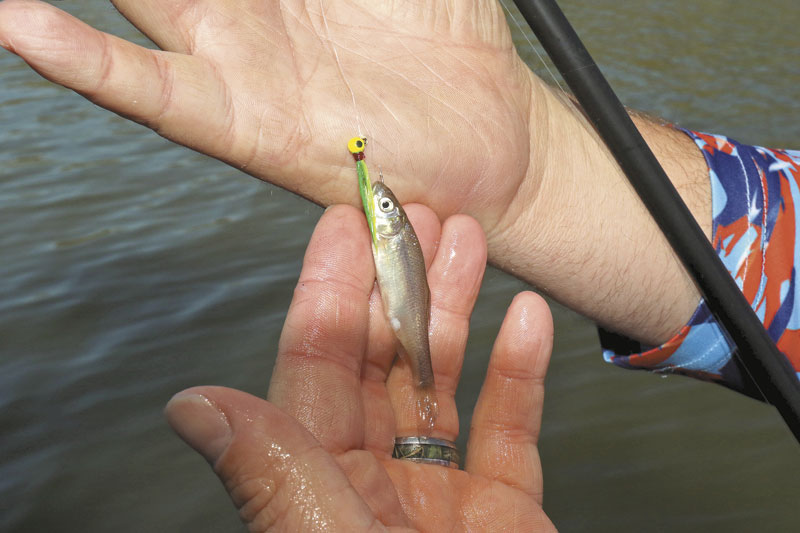
White Lake
Singletary Park also administers 1,065-acre White Lake. Its yellow perch population recovered from a 2018 fish kill caused by a municipal alum application aimed at clearing the water. The naturally low-pH bay lake now has a pH of 6.5 that can reach 8.5 in summer when powerboats stir the water and lawn fertilization increases the lake’s fertility said WRC Dist. 4 fisheries biologist Kyle Rachels. The changing pH has resulted in excellent fishing for largemouth bass. And so far, yellow perch are still abundant.
“We are finding schools of 50 to 100 yellow perch during our electrofishing surveys,” Rachels said. “The schools are mostly in open water, where trolling with lures is the best way to catch them. They are usually smaller fish. But we see some really big ones. Anglers also catch them by casting lures and bait rigs along the bank and areas with aquatic vegetation.”
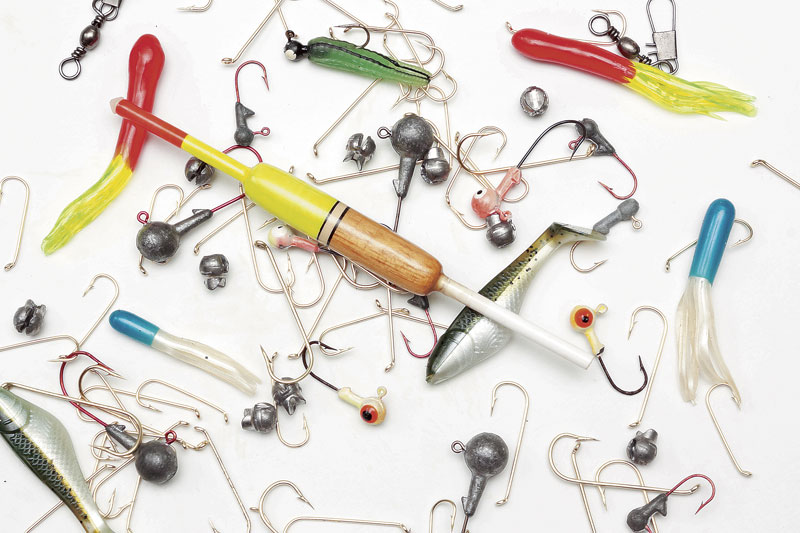
Jones Lake
Jones Lake is a 2,208-acre, low-pH bay lake. Jones Lake Park Superintendent Shane Freeman said yellow perch are abundant.
“I have seen anglers catch 12-inch yellow perch, but most are 5 to 7 inches,” Freeman said. “They also catch bullheads, chain pickerel and fliers. The best place is the fishing pier. But anglers can fish from the bank anywhere except the designated swim area and canoe-rental pier. Not many anglers come to fish specifically, but are here for a picnic or are staying at the campground.”
Lake Waccamaw
At 8,936 acres, Lake Waccamaw, the largest bay lake, has excellent fishing for many species due to a neutral pH resulting from an underwater limestone outcropping. While the yellow perch are scattered most of the year, their early spring spawning runs yield plentiful catches.
The best place to fish is the dam, where a foot bridge with a fishing area was built a couple of years ago. If the water is flowing deep enough, yellow perch swim over the dam to reach the lake to spawn. The fishing can be excellent for anglers who fish with float rigs baited with red worms, night crawlers and minnows.
Waccamaw, Lumber, and Black Rivers
In the acidic, coastal black water rivers, anglers fishing for crappie with minnows or jigs are often surprised to catch yellow perch. But yellow perch may strike many natural baits and lures.
“When they are in the lakes, yellow perch tend to school. But in the rivers, they are more widely distributed,” Rachels said. “However, river fish are usually larger fish and we catch many of them in our electrofishing surveys. The best rivers are the Waccamaw, Black and Lumber. In the Lumber River, we catch some weighing a pound, with Big Swamp a great place to catch them.”
South Carolina
South Carolina’s stretch of the Waccamaw River also yields yellow perch. SCNDR Region 2 fisheries biologist Jason Marsik said they turn up in electrofishing surveys.
“The majority of the population is from Conway downstream to the Bucksport area,” Marsik said. “We also collected some around the Wacca Wache Marina. There is a small population. But I am not sure if there are enough yellow perch to target them unless you know what you are looking for. It’s probably more of a bycatch situation when anglers are fishing for crappie or other species with minnows and worms.”
Bushy Park Reservoir
Bushy Park Reservoir is an 800-acre tidal lake near Goose Creek. The reservoir is fed by the Cooper River, Foster Creek and Back River. While the water level is affected by the tide, the dam-and-canal system creates more of a freshwater ecosystem than that area of the Cooper River, which is brackish. SCNDR fisheries biologist Levi Kaczka said he has caught yellow perch in the lake.
“In Region 4, you are liable to find yellow perch just about anywhere,” Kaczka said. “You might catch them in Lake Moultrie or Lake Marion. But Bushy Park is as promising a place as there is in that part of the state. We have not surveyed that area. But I have fished a lot recreationally and I have seen some larger perch caught. Right out from the boat landing the bottom drops down to about 40 feet. It has a lot of vegetation coming out from the bank that attracts yellow perch. So anglers should fish the vegetation line with crickets, Beetle Spins, redworms – anything that gets down into the lower part of the water column.”
Stevens Creek Reservoir
Located near North Augusta, downstream of J. Strom Thurmond Reservoir, 2,400-acre Stevens Creek Reservoir is a long, riverine lake that impounds the Savannah River and Stevens Creek. SCDNR Region 3 fisheries biologist Jason Bettinger said he was surprised when he saw anglers fishing for yellow perch.
“We were doing some other work and all of a sudden we saw a lot of boats grouped together and the anglers were catching yellow perch,” Bettinger said. “The best way to target them is by fishing with crappie minnows on jigs or Beetle Spins.”
Stevens Creek has four ramps. The best one for getting to the perch action is the Corps of Engineers ramp just downstream of Thurmond Dam. Bettinger said the clear water coming off the dam creates a dedicated fishery in cold weather. Anglers fish the main channel, but the flow volume depends upon the dam releases and that can impact the fishing. In the lower lake, the Stevens Creek area is difficult to navigate because it is shallow and stumpy.
 Yellow perch profile
Yellow perch profile
Anglers call yellow perch (Perca flavescens) many names including redfin, redfin perch, raccoon perch and raccoon bream, deriving the names from dark bars resembling the bands around the tail of a raccoon and from the brilliant scarlet fins of the fish during spawning season.
Females tend to be larger and are most likely to be found in large concentrations during the spawning period. Males form very large schools during the spawn, but tend to be smaller fish. In rivers, yellow perch are more scattered than in lakes, but are usually larger individuals.

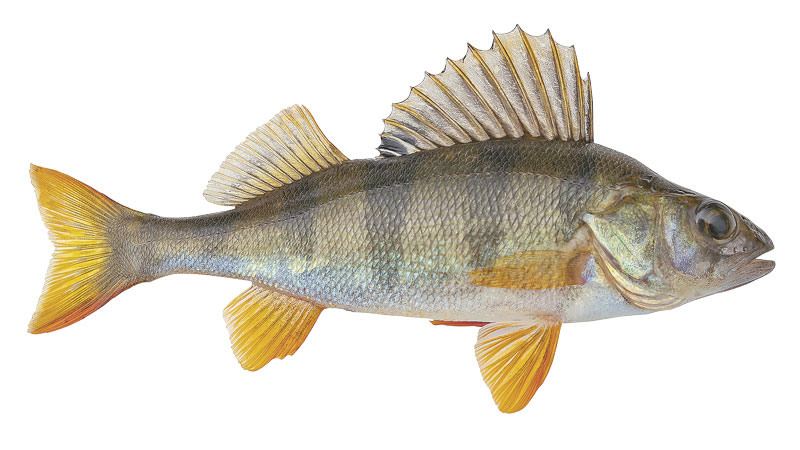
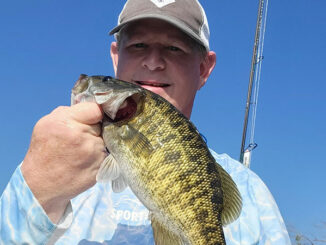
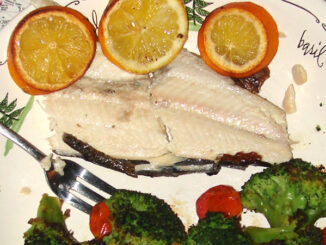


Be the first to comment